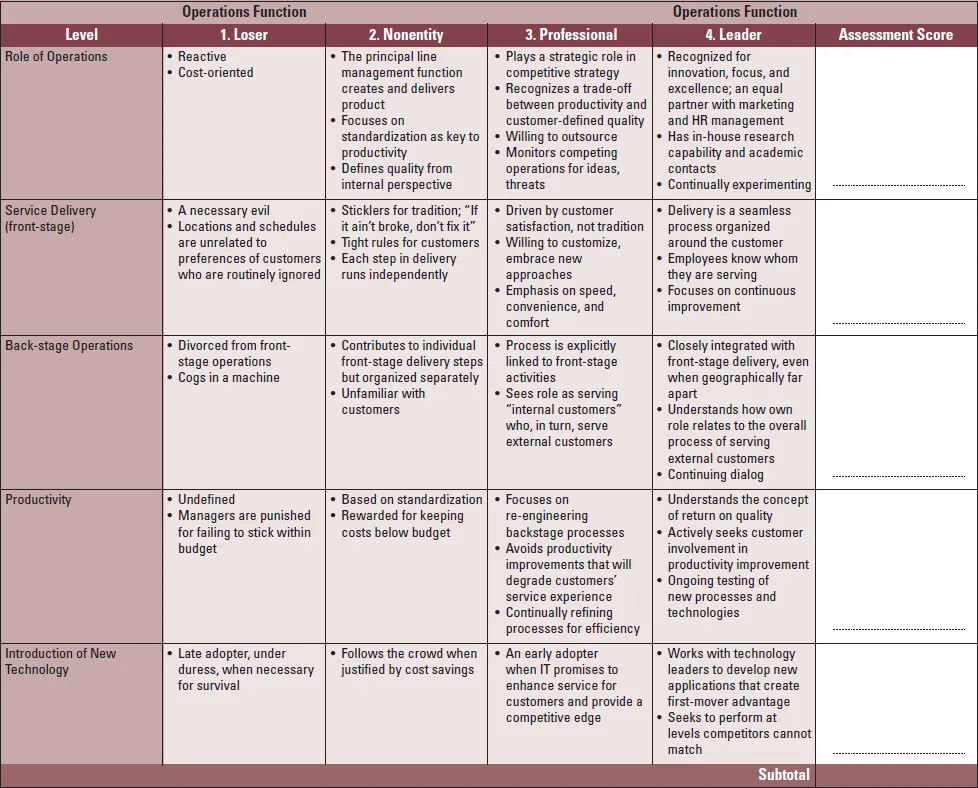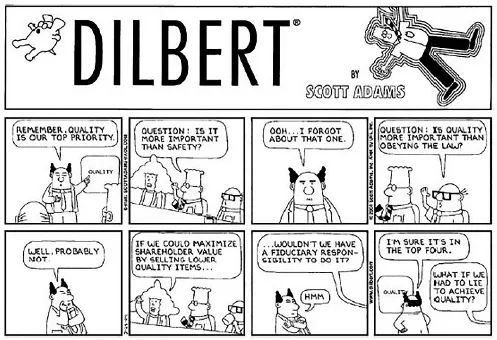![]()
VOLUME 15
Building a World-Class Service Organization
Marketing is so basic that it cannot be considered a separate function… It is the whole business seen from the point of view of its final result, that is, from the customer’s point of view. Concern and responsibility for marketing must, therefore, permeate all areas of the enterprise.
Peter Drucker,
Management consultant, educator, and author
Described as a founder of modern management
[T]he more short-term a company’s focus becomes, the more likely the firm will be to engage in behavior that actually destroys value.
Don Peppers and Martha Rogers
Founding partners of Peppers & Rogers Group
A customer-centric management consulting firm
“Why is it so hard for so many to realize that winners are usually the ones who work harder, work longer, and as a result, perform better?” and “Big things are accomplished only through the perfection of minor details”.
John Wooden
Legendary former UCLA Basketball Team Coach
INTRODUCTION
This volume provides a summary of how a world-class service organization looks like, which can be used as an assessment tool. Financial impact of being a service leader is also discussed and the volume concludes with a call to action on the readers’ part!
CREATING A WORD CLASS SERVICE ORGANIZATION
How would one describe a breakthrough service organization? Based on our observations having worked in the field of services marketing for decades, we observed that a number of characteristics are necessary (but may not be sufficient) for becoming and remaining a breakthrough service organization. Next, we will analyze more comprehensively how firms can be categorized into four performance levels, and how they can then move up the performance ladder.
From Losers to Leaders: Four Levels of Service Performance
Service leadership is not based on outstanding performance within a single dimension. Rather, it reflects excellence across multiple dimensions. In an effort to capture this performance spectrum, we need to evaluate the organization within each of the three functional areas described earlier — marketing, operations, and human resources. Table 1 categorizes service performers into four levels: loser, non-entity, professional, and leader.2 At each level, there is a brief description of a typical organization across 12 dimensions.
Under the marketing function, we look at the role of marketing, competitive appeal, customer profile and service quality. Under the operations function, we consider the role of operations, service delivery (front-stage), backstage operations, productivity, and introduction of new technologies. Finally, under the human resources function, we examine the role of HRM, the workforce, and frontline management. Obviously, there are overlaps between these dimensions and across functions. There may also be differences in the relative importance of some dimensions in different industries and across different delivery systems. For instance, human resource management tends to play a more prominent strategic role in high-contact services. The goal of this overall service performance framework is to generate insights into how service leaders perform so well and what needs to be changed in organizations that are not performing as well as they might.
Table 1 is a useful tool to perform an in-depth appraisal of a company in a specific industry, as a point of departure, modifying some of the elements to create a customized assessment tool.
Service Losers. These firms are at the bottom of the barrel from customer, employee, and managerial perspectives, and get failing grades in marketing, operations, and HRM. Customers patronize them for reasons other than performance, typically because there is no viable alternative, which is one reason why service losers continue to survive. Managers of such organizations may even see service delivery as a necessary evil. New technology is introduced only under duress, and the uncaring workforce is a negative constraint on performance.
Service Non-entities. Although their performance still leaves much to be desired, service nonentities have eliminated the worst features of losers. Non-entities are dominated by a traditional operations mindset, typically based on achieving cost savings through standardization. Their marketing strategies are unsophisticated, and the roles of human resources and operations might be summed up respectively by the philosophies “adequate is good enough” and “if it ain’t broke, don’t fix it”. Managers may talk about improving quality and other goals, but are unable to set clear priorities to have a clear direction, nor gain the respect and commitment of their employees (Figure 1). Several such firms are often found competing in a lackluster fashion within a given marketplace, and you might have difficulty distinguishing one from the others. Periodic price discounts tend to be the primary means of trying to attract new customers.
Service Professionals. Service professionals are in a different league from non-entities and have a clear market positioning strategy. Customers within the target segments seek out these firms based on their sustained reputation for consistently meeting expectations. Marketing is sophisticated, using targeted communications and pricing based on value to the customer. Research is used to measure customer satisfaction and obtain ideas for service enhancement. Operations and marketing work together to introduce new delivery systems, and recognize the trade-off between productivity and customer-defined quality. There are explicit links between backstage and front-stage activities, and the firm has a much more proactive, investment-oriented approach to HRM than is found among nonentities.
Table 1: Four Levels of Service Performance Assessment Tool.
Legend: Score each area from ‘1’ to ‘4’ depending on the performance level of the organization that is being assessed. Average the scores for each function, and then average the functions to obtain the total assessment score.
A score of “3.5 and above” indicates excellent performance; a score from “2.5. to 3.4” indicates good performance, a score from “1.5 to 2.4” indicates average to poor performance, and a score of “1.4 and lower” indicates very poor performance.
Legend: Score each area from ‘1’ to ‘4’ depending on the performance level of the organization that is being assessed. Average the scores for each function, and then average the functions to obtain the total assessment score.
A score of “3.5 and above” indicates excellent performance; a score from “2.5. to 3.4” indicates good performance, a score from “1.5 to 2.4” indicates average to poor performance, and a score of “1.4 and lower” indicates very poor performance.
Legend: Score each area from ‘1’ to ‘4’ depending on the performance level of the organization that is being assessed. Average the scores for each function, and then average the functions to obtain the total assessment score.
A score of “3.5 and above” indicates excellent performance; a score from “2.5. to 3.4” indicates good performance, a score from “1.5 to 2.4” indicates average to poor performance, and a score of “1.4 and lower” indicates very poor performance.
Note: This framework was inspired by, and expands upon, work in service operations management by Richard Chase and Robert Hayes.
Figure 1: Dilbert’s boss loses focus — and his audience.
Dilbert by Scott Adams. © Universal Uclick All Rights Reserved.
Service Leaders. These organizations are breakthrough service organizations, world-class service leaders, and are the crème de la crème of their respective industries. Where service professionals are good, service leaders are outstanding. When we think of service leaders, we think of Amazon, McKinsey, Ritz Carlton, Southwest Airlines, Starbucks, and Zappos. Their company names are synonymous with service excellence and the ability to delight customers. Service leaders are recognized for their innovation in each functional area of management as well as for their superior internal communications and coordination among these three functions, often the result of a relatively flat organizational structure and the extensive use of teams. As a result, service delivery is a seamless process organized around the customer.
Marketing efforts by service leaders make extensive use of customer relationship management (CRM) systems that offer strategic insights about customers, who are often addressed on a one-to-one basis. Concept testing, observation, and contacts with lead customers are employed in the development of new, breakthrough services that respond to previously unrecognized needs. Operations specialists work with technology leaders around the world to develop new applications that will create a first mover advantage, and enable the firm to perform at levels that competitors cannot hope to reach for a long time to come. Senior executives see quality of employees as a strategic advantage. HRM works on building and maintaining a service-oriented culture and creating an outstanding working environment that simplifies the task of attracting and retaining the best people (Figure 2).3 The employees themselves are committed to the firm’s values and goals. Because they are engaged, empowered, and quick to embrace change, they are an ongoing source of new ideas and they continuously drive improvement.
Figure 2: Creating an outstanding work environment attracts and retains the best people.
Moving to a Higher Level of Performance
Almost all companies want to be service leaders. We want to win our customers’ loyalty and we want our customers to say good things about us. If we can achieve these objectives, we will increase our market share, our shareholder value, and our share of community goodwill. These are powerful reasons for moving to a higher performance level.4 This view is becoming widely accepted, and in most markets we can find companies moving up the performance ladder through conscious efforts to improve and coordinate their marketing, operations, and HRM functions, in a bid to establish more favorable competitive positions and better satisfy their customers.
It requires human leaders at all levels of an organization to take a service firm in the right direction, set the right strategic priorities, and ensure the relevant strategies are implemented throughout the organization. And the various chapters throughout this book discuss exactly how it can be done through various tools, concepts, and theories.
CUSTOMER SATISFACTION AND CORPORATE PERFORMANCE
The philosophy of this series has been all about customer centricity and creating value for customers as a long-term core strategy. This perspective permeates many of the key concepts and models you have learned in this series, including the Service-Profit Chain, Cycle of Success, Service Talent Cycle, Wheel of Loyalty, and the Gaps Model. We therefore feel it is fitting to present another piece of evidence that long-term perspective and cust...





